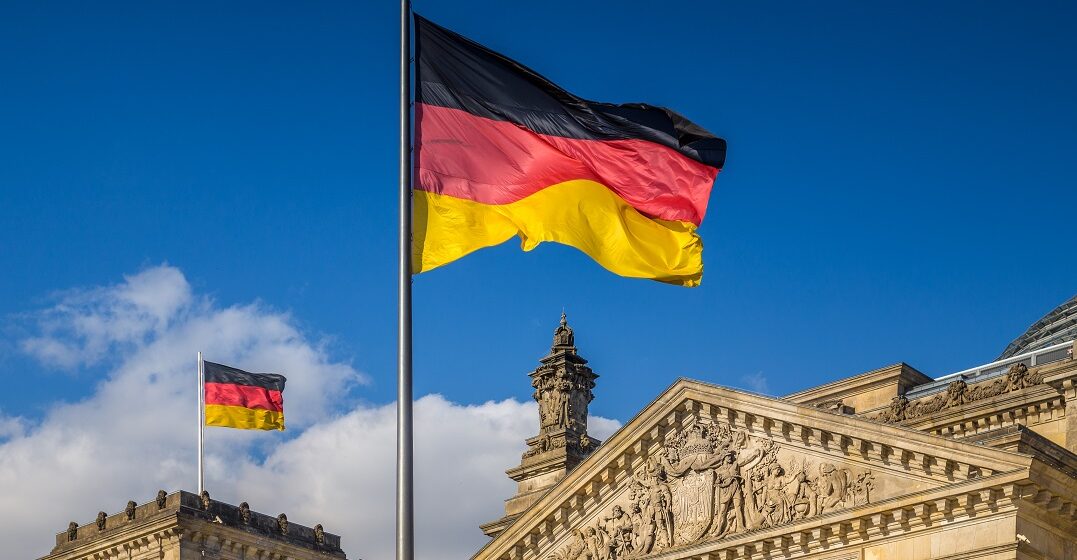Published on July 3, 2023

The history and lyrics of the German national anthem

A national anthem is meant to be a symbol of national identity and unity. In the best cases, it represents the common values and aspirations of a nation. Germany’s modern national anthem, “Das Lied der Deutschen” (“The Song of the Germans”), has a long and sometimes difficult history. In this way, at least, you might say that it reflects the country of its birth.
Many associate the song with the infamous original first verse: “Deutschland, Deutschland über alles, über alles in der Welt” (“Germany, Germany above everything, above everything in the world”). But in a country with a complicated relationship to nationalism, you certainly won’t hear these lines sung at a football game. To further explain how Germans relate to the song today, let’s review the history of Germany’s national anthem (or, rather, anthems) as well as a translation of the song’s modern-day lyrics.
The history of the German national anthem dates back to 1841, when the lyrics were written as a poem by August Heinrich Hoffmann von Fallersleben. Its melody is even older, written by the composer Joseph Haydn in 1797 as the “Kaiserhymne” (“Emperor’s Hymn”). Lyrics and music together form the song familiar to us today.
The original lyrics from 1841 were written during a time of growing nationalism in Germany. At that time, Germany consisted of a patchwork of small independent states, but there was a growing desire among many Germans for a unified country. Hoffmann von Fallersleben’s poem originally had three stanzas incorporating the themes of unity, justice and freedom.
The song gained popularity throughout the 19th century. After the formation of the German Empire in 1871, the song became a symbol of German national identity. But it was still not the official national anthem. This honor went to the song “Heil dir im Siegerkranz” (“Hail to Thee in the Victor’s Crown”), which had been the royal Prussian anthem. This song served as the national anthem of the German Empire from 1871 to 1918.
When the imperial monarchy was dissolved in the wake of World War I and replaced by the democratic Weimar Republic, “Das Lied der Deutschen” was chosen as the new anthem. It was selected in order to preserve a sense of continuity with the previous German state. In order to distance the anthem from its prior associations with imperial rule, only the third stanza remained intact during the Weimar years. This stanza, which speaks of unity and freedom, was seen as more representative of the aspirations of the new democratic republic.
In the Nazi era, only the first stanza remained in use (this is where we find the lyrics “Deutschland, Deutschland über alles”). But the national anthem was largely replaced by the “Horst-Wessel-Lied,” (“Horst Wessel Song”) named after Horst Wessel, an SA (Sturmabteilung) thug who was killed in 1930 and hailed as a martyr by the Nazi Party. It served as the unofficial anthem of Nazi Germany. Its lyrics glorified Hitler and the Nazi Party and promoted ideas of German racial superiority, antisemitism and militarism. As such, the song has been banned in Germany since the end of World War II.
After World War II, Germany was divided into West Germany (Federal Republic of Germany) and East Germany (German Democratic Republic). In West Germany, the third stanza of “Das Lied der Deutschen” was adopted as the national anthem in 1952, but the first and second stanzas were omitted because of their association with the Nazi regime.
Meanwhile, East Germany had its own national anthem, “Auferstanden aus Ruinen” (“Resurrected from Ruins”). The words were written by the poet and politician Johannes R. Becher, and the melody was composed by German-Austrian composer Hanns Eisler, who was also famous for his long association with the great German playwright Bertolt Brecht. This anthem reflected the ideology and high aspirations of the new socialist state, emphasizing solidarity, comradery and national revival after the war.
With the fall of the Berlin Wall and Germany’s reunification in 1990, the third stanza of “Das Lied der Deutschen” became the national anthem of a united Germany.
Here are the lyrics of the modern German national anthem (i.e. the third stanza of the original):
Lyrics in German:
Einigkeit und Recht und Freiheit
für das deutsche Vaterland!
Danach lasst uns alle streben
brüderlich mit Herz und Hand!
Einigkeit und Recht und Freiheit
sind des Glückes Unterpfand:
Blüh im Glanze dieses Glückes,
blühe, deutsches Vaterland!
Lyrics in English:
Unity and justice and freedom
for the German fatherland!
Let us all strive for this
with heart and hand as brothers!
Unity and justice and freedom
are the pledge of happiness:
Blossom in the splendor of this happiness,
blossom, German fatherland!
Germany has had a few anthems over the 150 years. Each change in Germany’s national anthem reflects an important chapter in the complicated history of the country. Nevertheless, “Das Lied der Deutschen” seems here to stay. For a country so often divided both literally and philosophically, the modern rendition emphasizes the unity and aspirations for happiness that unites Germany today. Its uplifting third verse reflects the wishes of von Fallersleben, who wrote it almost two centuries ago, for a Germany united in justice and freedom .